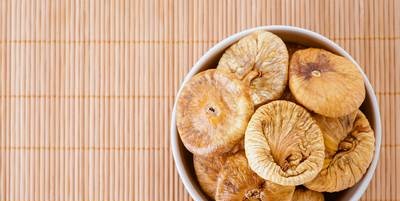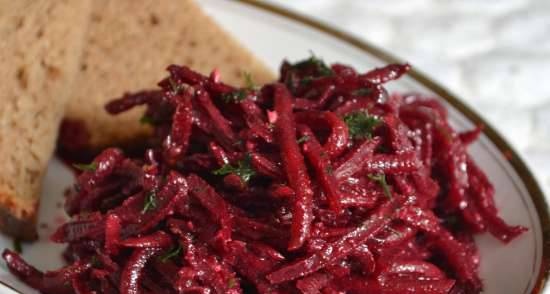|
 Foods consumed by humans contain different nutrients in varying amounts. Some of them are rich in carbohydrates, others - in fats, and still others are the main source of protein. On this basis, they can be divided into several groups. Foods consumed by humans contain different nutrients in varying amounts. Some of them are rich in carbohydrates, others - in fats, and still others are the main source of protein. On this basis, they can be divided into several groups.
Cereals and legumes
All cereal products are relatively cheap. They provide the body with many essential nutrients: carbohydrates, B vitamins, iron and protein. Cereal products do not contain vitamins A, D and C. To compensate for this deficiency, they should be used in combination with milk, meat, eggs, as well as vegetables and fruits.
Grain products are part of our diet in the form of baked goods, cereals, pasta, etc.
The nutritional value of baked goods depends on the type of flour. The darker the flour, the more nutrients (protein, B vitamins, minerals and fiber) it contains. Therefore, along with white bread, we should also have black bread in our menu. Of the cereals, the most valuable in terms of nutritional value are buckwheat, oat and barley (pearl barley, barley). Semolina and rice are among the least valuable.
Dry leguminous seeds are rich in carbohydrates; they contain a relatively large amount of protein, minerals and B vitamins. The protein of these seeds is especially valuable: in terms of nutritional value, it is close to that of an animal.
Sugar and confectionery
In ancient times, sugar was used as a miracle cure for many diseases. It was a rare and expensive product, inaccessible to the majority of the population. In the 19th century, the consumption of sugar and sweets did not exceed 50-60 g per person per day. Sugar consumption increased after World War II. Today in many countries there is a problem of excessive consumption of it. Sugar only supplies energy to the body; it cannot replace bread, pastries, and other foods.
Confectionery (cakes, candies and other sweets) are high in sugar and starch. Their nutritional value depends primarily on the additives used (milk, eggs, fat, yeast, etc.).
Potatoes, vegetables and fruits
Potato tuber is a storehouse of many nutrients: starch (up to 20%), vitamin C and group B, minerals and a small amount of protein. Potatoes are one of the most important sources of vitamin C, especially in winter and early spring. Depending on the variety, duration and storage conditions, the content of this vitamin ranges from 3 to 30 mg / 100 g of fresh mass. The amount of protein in tubers reaches 1–2.5 g / 100 g of the product, and in terms of nutritional value, it is considered more valuable than wheat protein.
Vegetables and fruits, although they are low-calorie foods, are indispensable in human nutrition. It is a rich source of vitamins and minerals. According to the content of vitamin C and provitamin A, they can be divided into the following groups:
1. Vegetables and fruits rich in provitamin A and vitamin C: parsley, dill, beet tops, red pepper, spinach, sorrel, green pea, collard greens, tomatoes, green beans, peaches.
2. Vegetables and fruits high in vitamin A and low in vitamin C: carrots, pumpkin, zucchini, apricots, plums, cherries, cherries.
3. Vegetables and fruits high in vitamin C and low in vitamin A: horseradish, cauliflower, red cabbage, white cabbage, savoy cabbage, Brussels sprouts, green peppers, parsley (root), kohlrabi, green onions, lemons, oranges, strawberries, cranberries, lingonberries, black currants, gooseberries, blueberries, blackberries, raspberries, red and white currants, strawberries.
There are vegetables and fruits that contain very few vitamins (scorzonera, beets, onions, cucumbers, celery, pears, apples, grapes), but are widely used in nutrition due to their taste and rich content of minerals.
Milk and dairy products
Milk is the first, and on the threshold of life, the only food product for humans and animals.It contains components such as protein, milk sugar (lactose), fat, minerals (calcium, phosphorus, sodium, potassium) and B vitamins. Milk fat includes carotene (provitamin A), which turns into vitamin A, which is very important for human health. In addition to carotene, milk contains vitamins A, D, E, K and essential fatty acids. Milk and dairy products are essentially the only rich source of easily digestible calcium. Milk is used to produce curdled milk, kefir and yogurt - the so-called fermented drinks. In terms of nutritional value, they approach milk with the only difference that during fermentation, milk sugar turns into lactic acid, and alcohol is also present in kefir. Dairy drinks also include buttermilk and whey. Buttermilk is a by-product of butter production. In terms of protein content, it is equal to milk, but does not contain fat and vitamins A, D, E and K dissolved in it. Whey is obtained in the production of cheese. In terms of nutritional value, it is inferior to buttermilk, but contains a small amount of protein, minerals and B vitamins.
A cheap source of protein is cottage cheese. It contains many B vitamins, especially B2, but little calcium. During the production of curd, most of the calcium contained in milk goes into whey. For example, 100 g of cottage cheese contains 98 mg of calcium, and a glass of milk contains about 300 mg.
Yellow cheese (to be ripened) contains a lot of animal protein, minerals and B vitamins. Depending on the variety, the amount of fat in it can vary from 10 to 40%. Different types of cheeses differ in taste and aroma. There are cheeses with a soft and delicate aroma (Swiss, Edam, guda) and with a spicy, piquant (Tilsit, salami). Smoked cheeses (hunting, Podgalsky) have a delicate taste and a noticeable smell of smoke. Processed cheeses are made from yellow cheeses.
Sour cream and cream can contain from 9 to 30% fat. Sour cream is obtained by fermenting cream. A good sour cream should be thick but fluid, white to cream in color, and a smooth consistency (no lumps of fat and casein).
Meat and eggs
Meat is a source of complete protein. It also contains fat, minerals, B vitamins and a small amount of carbohydrates. The nutritional value of meat is not the same. It depends on the type of animal, the degree of its fatness and the part of the carcass from which the meat is taken. Fatty meat contains less protein but is richer in energy. For example, 100 g of lean beef supplies about 200 kcal, 100 g of fatty beef - 340 kcal; 100 g of lean pork - about 400 kcal, 100 g of fatty - 570 kcal. Meat of geese, ducks and chickens belongs to fatty varieties, meat of chickens and turkeys - to low-fat varieties.
Fish meat is a rich source of complete protein. It also supplies significant amounts of minerals such as phosphorus, calcium, magnesium, sodium, potassium, and sea fish meat also supplies iodine. Fish oil is rich in vitamins A and D, therefore it is widely used in medicine. Fish meat also contains B vitamins. Depending on the type of fish, 100 g of their meat contains from 80 to 300 kcal.
 By-products are of great importance in human nutrition. Among them, the greatest nutritional value is distinguished liver... This is a real storehouse of proteins, vitamins A, D, E, K, group B, minerals and even vitamin C. By-products are of great importance in human nutrition. Among them, the greatest nutritional value is distinguished liver... This is a real storehouse of proteins, vitamins A, D, E, K, group B, minerals and even vitamin C.
Eggs can replace meat in our menu, but they cannot replace milk, since they contain a small amount of calcium. Egg yolk includes complete protein, fat, vitamins A, D, E, K, group B and minerals. There is no fat or vitamins in the egg white.
Fats can be divided into two groups: animal origin (fat, oil) and vegetable (sunflower, olive oil, margarine). Vegetable fat and ghee are pure fats, i.e. 100 g of product contains 100 g of fat.
The average duration of food storage in refrigerators and cellars at a temperature not exceeding 6 ° C (according to G. Stobtsitskaya-Shchiglova, J. Sichkuvna, L. Novitskaya). 100 g of butter, margarine and lard contains 85 g of fat, the rest is water and a small amount of protein. In addition, butter and fortified margarine are a source of vitamins A and D.
Vegetable oils are prized for their high nutritional value. In addition to fat, they contain vitamin E and unsaturated fatty acids. It was also found that vegetable fat prevents the accumulation of cholesterol in the blood, which is of great importance for human health. Olive oil has a specific aroma, delicate taste and is mainly used for salad dressing. In terms of nutritional value, it is inferior to sunflower. Margarine is obtained from vegetable oil. In terms of taste and consistency, this fat is close to butter, and some of its varieties, such as vegetable oil "Vita" and margarine "Solnechny", due to the addition of vitamins and nutritional value.
Condiments give a varied taste and aroma to cooked dishes and are a source of many valuable components that are absent in some products. These are vitamins, tannins, essential oils, trace elements and other substances that have a positive effect on various physiological processes in the human body. In addition to many traditional spices (bay leaf, pepper, cinnamon, etc.), medicinal herbs are increasingly used in this capacity.
Seasonings can improve or diminish the flavor and aroma of foods, depending on how well they are used. The way they are stored is of great importance. They are best stored in glass, tightly sealed jars. Many of them should be protected from sunlight and moisture to avoid clumping, mold, discoloration, etc. Storing seasonings in metal cans changes the aroma through chemical reactions with the metal. They lose their aroma when stored in unsealed containers.
Szczepanska B., Tarnowska K. Breakfasts, lunches and dinners for four seasons
|
 Foods consumed by humans contain different nutrients in varying amounts. Some of them are rich in carbohydrates, others - in fats, and still others are the main source of protein. On this basis, they can be divided into several groups.
Foods consumed by humans contain different nutrients in varying amounts. Some of them are rich in carbohydrates, others - in fats, and still others are the main source of protein. On this basis, they can be divided into several groups.









